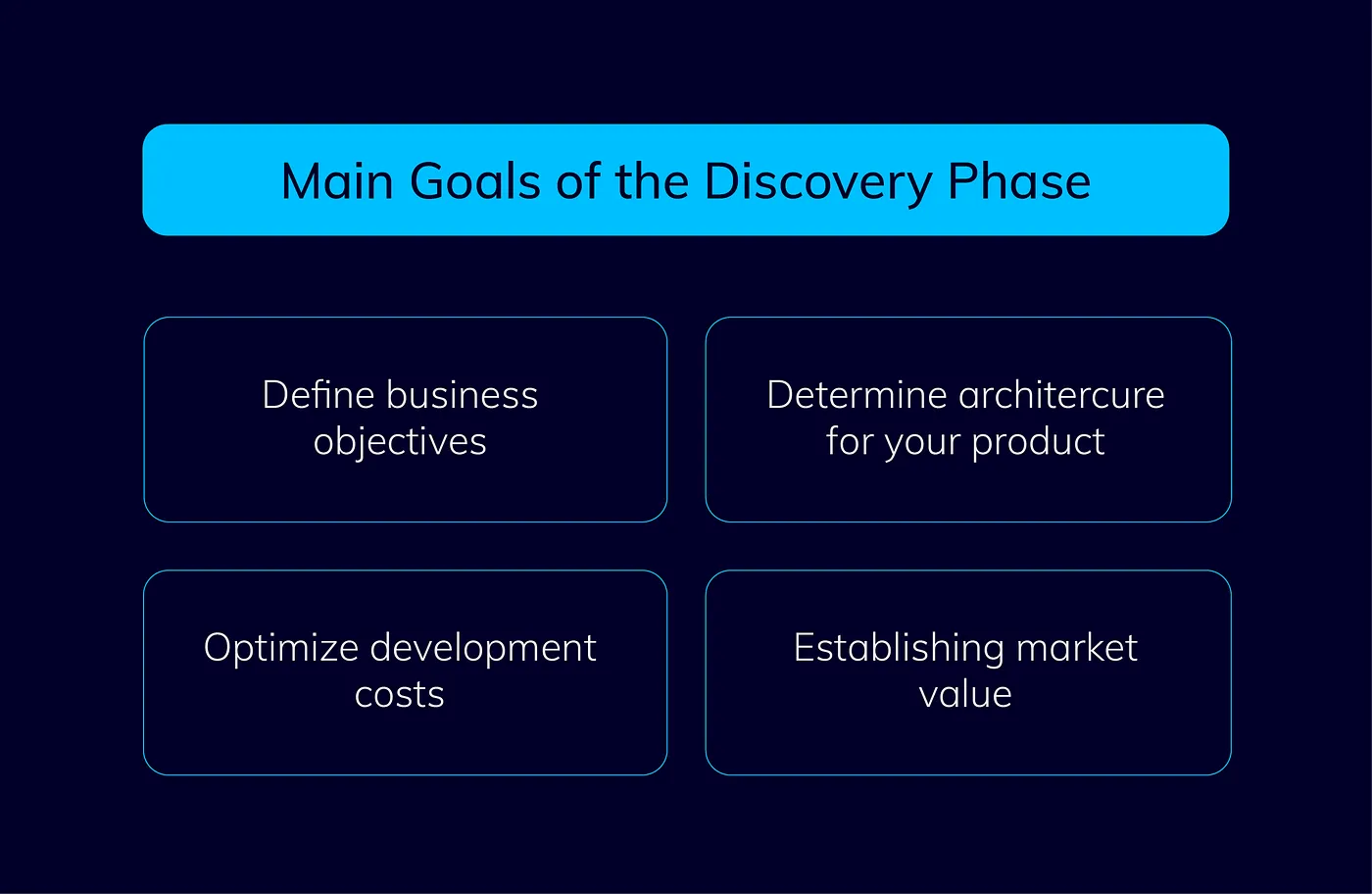Primarily, the project discovery phase is supposed to forecast and exclude risks like a lack of market demand, expenses you can’t predict, and whether or not you’ll be able to cover them. Those who skip the discovery phase later face issues that would have been easy to deal with at the beginning, and thus, spend more time and money to fix the problem.
On top of that, the discovery stage helps to understand the target audience and roll out a product that is a missing puzzle on the picture of users’ needs.
Discovery phase team
The project’s complexity and goals determine who is going to participate in the project discovery phase. Because of the project differences and a variety of tasks, a team should be formed on a case-by-case basis according to such factors as:
- Client’s documentation
- A team on the client’s side
In general, such a team includes:
Project Manager (Discovery Phase Project Management)
The project manager is responsible for planning and defining the scope of the software development project, planning the resources, time and cost estimation, creating documentation, organizing meetings with clients, and establishing productive cooperation between teams.
Business Analyst (Discovery Phase Business Analysis)
The responsibility of the business analyst is to analyze the potential and profitability of the product on the market, gather solutions to reach the business goals, create reports according to the metrics and technical documentation. Also, business analysts define functional and non-functional software development project requirements and align them with business objectives. BAs engage with executives and stakeholders to understand business objectives and create appropriate functional and non-functional project requirements according to discovery phase business analysis.
Tech leads
Tech lead is a software engineer, who communicates with customer and development teams, establishes a technical vision (defines technical requirements), and suggests the best development approach to the particular project.
UX/UI designer
UI/UX responsibilities include building intuitive navigation according to user requirements. UX and UI design are two different elements, however, there might be one person who is experienced in both aspects of web design.
As a rule, UX designer is a voice of the user's needs who strives to meet business objectives. UX designer makes user research, creates prototypes, process flows, and sitemaps. UX designers are responsible for conducting user testing to gather feedback and providing solutions for users’ needs.
Both UI and UX share the same end goal, but UI has a completely different focus. UI designer cares about the visual aspect of the user experience, which includes creating an attractive and easy to use look and layout of the product.
Solution architect
A solution architect is a person who supports project management by analyzing the technology environment, enterprise specifics, participating in technology selection, and controlling solution development. All these aspects must be aligned with the solution goals, which is one more responsibility of a solution architect.
The product discovery process is versatile and it requires people with different experiences. Their experience increases creativity, fosters innovation, and encourages brainstorming. Before you decide on final team members, make sure that those people have various experiences and can bring meaningful contributions.
The process of the discovery phase in software development
When the team is ready, start the execution process. Typically the discovery phase takes around 4-8 weeks, depending upon the solution you want to develop and whether or not this subject has been researched before.
Defining a problem
Even if you already know what solution you want to develop you should figure out what problem is this solution for. This will help you to set a clear goal for your team.
The problem must be reflected through a question, for example: “How can we make it easier for people to make payments via mobile app?” The more specific problem is, the better solution you'll receive. You’ll also want to measure the benefits of your future service by estimating the costs of the problem.
Conducting deep research and asking the right questions
Detailed user research will help you to understand the path of the user interaction with the app features and interface. This stage incorporates conducting user interviews and surveys, creating user personas and user journeys and defining user needs.
Then, choose the best ideas with the team about what is required for the implementation of the product.
Solution Framing
Relying on previous research, a team of UI/UX designers will be able to create a visual solution.
Wireframing is the first step towards fancy design. It helps to define information architecture and content, eliminate rework and encourage feedback from users.
Prototyping aims to understand how users will interact with the future product and figure out whether a solution is going to be successful.
Testing
Now it’s a turn for the most practical part. Testing.
Getting back to the target audience will give you profound insights from the users and reveal what weaknesses your solution has and what must be fixed.
What you receive at the end of the discovery phase
At the end of the process you’ll receive:
- Features list
- Wireframes & Prototype
- Development team
- Technologies stack
- Time & Budget







_1764586939-small.webp)
